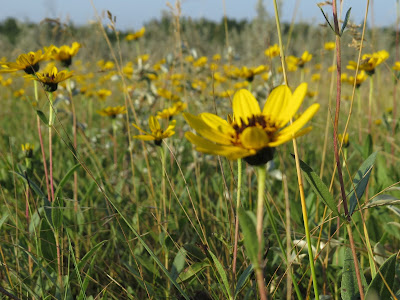A media release from Public Pastures--Public Interest
[don't miss the satellite image at the bottom of the release. It shows a piece of Crown land the Province sold after removing it from the Wildlife Habitat Protection Act.]
MEDIA RELEASE
Thursday March 31, 2016
REGINA, SK: A lot has been
said in this provincial election about human needs – but what about our
endangered prairie grassland and its inhabitants?
The prairie ecosystem is
one of the most altered and threatened in North America – only 20% of Saskatchewan’s
native prairie remains, and in some areas, such as the Regina Plains, less than
1% remains.
“Saskatchewan has the
largest proportion of Canada’s Prairie Ecozone, and therefore the greatest
responsibility to conserve it,” said Trevor Herriot, PPPI spokesperson. “Yet in
our election campaigns the subject is seldom mentioned. This is a vital topic –
we should be talking about what the prairie and its rare creatures might want
to see from our elected representatives.”
As well as providing a
home for more than thirty Species at Risk, including mammals, birds,
butterflies, snakes, frogs and toads, grasses and wildflowers, the province’s grasslands
store carbon, protect water quality and prevent soil loss.
“Our native grasslands,
particularly on Crown land, are part of Canada’s natural heritage, as precious
as our northern lakes and forests” Herriot said. “Do we want to rob our children
and grandchildren of the chance to know the prairie and its gifts or do we want
to take measures today to ensure that those gifts will be there a generation
from now?”
There are a great number
of things that can be done.
A government that cared for and supported our grasslands
heritage would:
1. Commit to
retain and not sell any Crown land with native grassland, including Community
Pastures.
2. Work with
ranchers, First Nations, and conservation groups to devise a plan to protect all
remaining native prairie from cultivation and other forms of development.
3. Monitor and
enforce Conservation Easements to prevent the breaking of native grassland and
protect other grassland areas that buffer native remnants. Once native prairie
is broken it cannot be restored.
4. Conduct a
complete inventory of our remaining native grasslands to determine how much remains
of each grassland ecotype.
5. Create
Saskatchewan legislation that recognizes the value of our grasslands, as has
been done in other provinces.
6. Retain all
grassland and Aspen parkland Crown lands originally listed under the Wildlife
Habitat Protection Act – do not sell them.
7. Make public
the criteria of the Crown Land Ecological Assessment Tool and the reasons for
each proposed land parcel re-classification and provide opportunities for
public input on the decision.
8. Rather than
lowering the standards for all grasslands to the lowest common denominator, make
an effort to raise the overall quality of the Provincial Pastures and Co-op Pastures
to the high standard of the PFRA-managed Community Pastures.
9. Ask the
federal government to halt the transfer of any more PFRA Community Pastures to
the province, administer a Strategic Environmental Assessment and review the
decision to end the Community Pasture Program.
10.Work with the
federal government concerning additional resources needed to manage public
values on Community Pastures such as: biodiversity, carbon sequestration,
ecosystem conservation, and public access.
11.Support and
work with ranchers to conserve and protect grassland ecosystems, but do not
off-load all public responsibilities for maintaining public benefits onto their
shoulders.
12.Involve
Saskatchewan’s range experts to allow ranchers to do the best job possible in
maintaining functioning prairie. Saskatchewan has over 200 grass species and
varieties and most of these are in the prairie zone. These species are valuable for providing seeds
now and will be more so in the future.
An example
This quarter-section was
recently declared of low ecological value and sold. Yet it is an island of
habitat in a sea of cropland and would definitely be habitat for many wildlife
species.
 |
| this quarter section of native grassland and aspen was removed from WHPA and sold |











